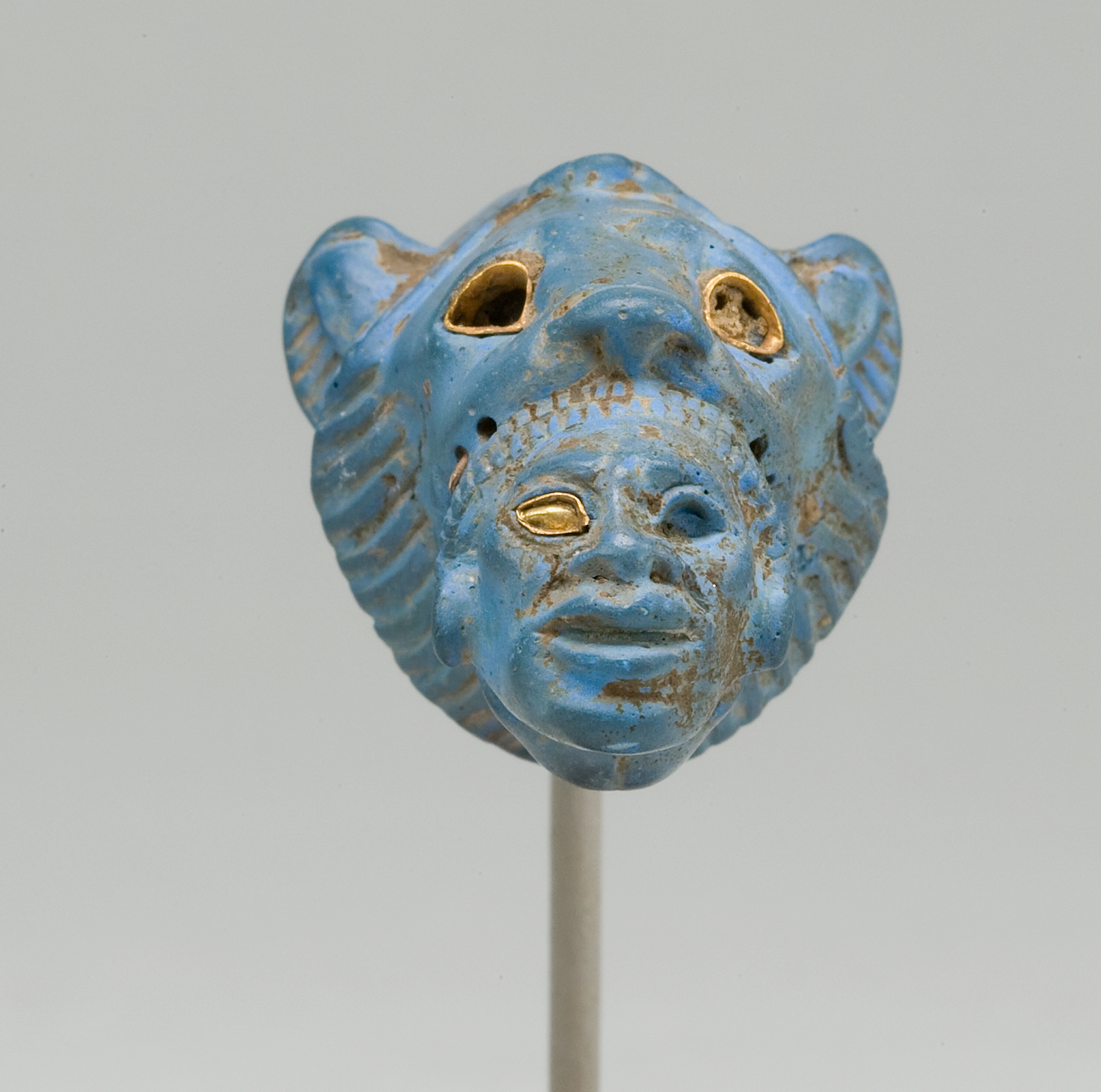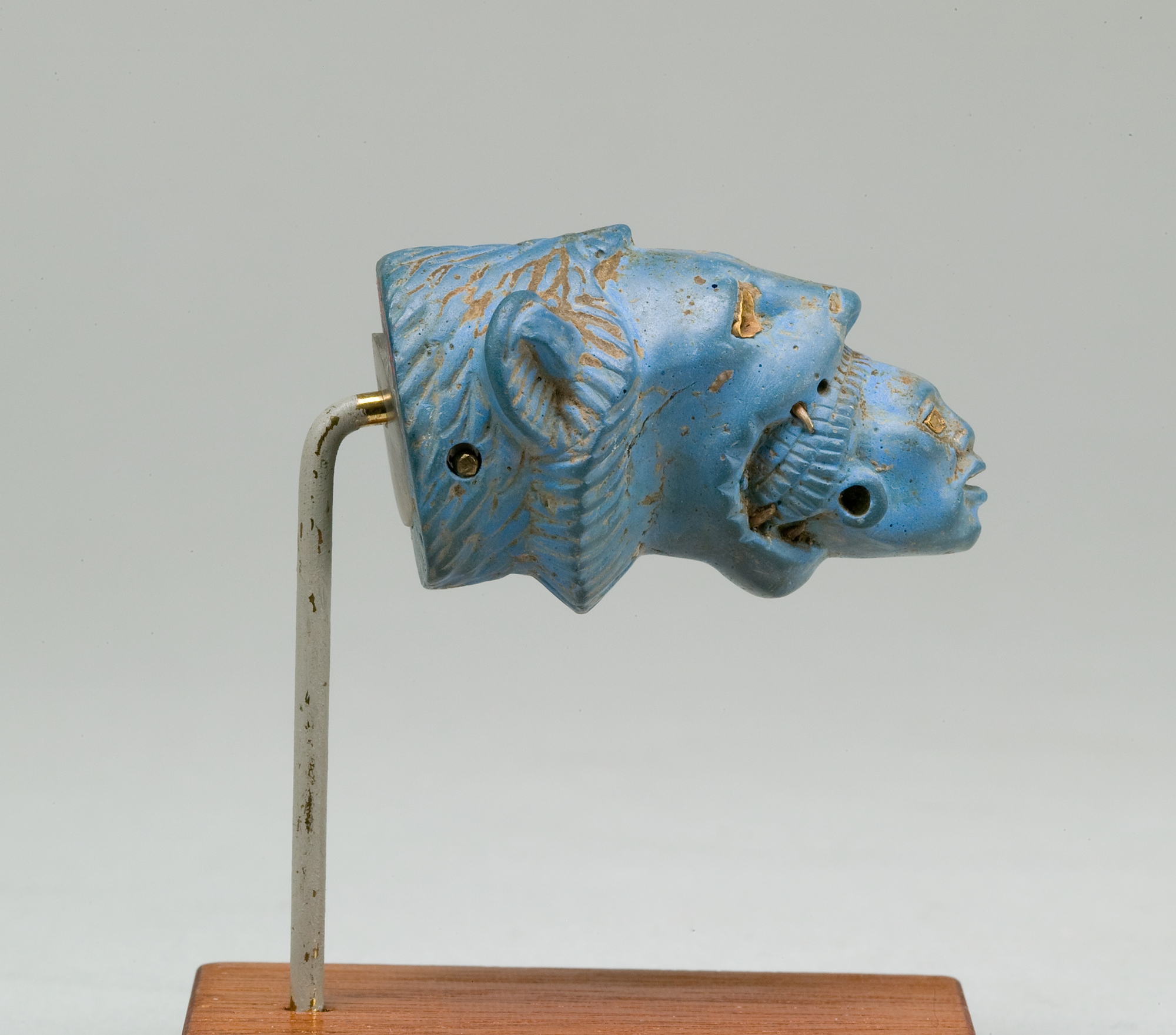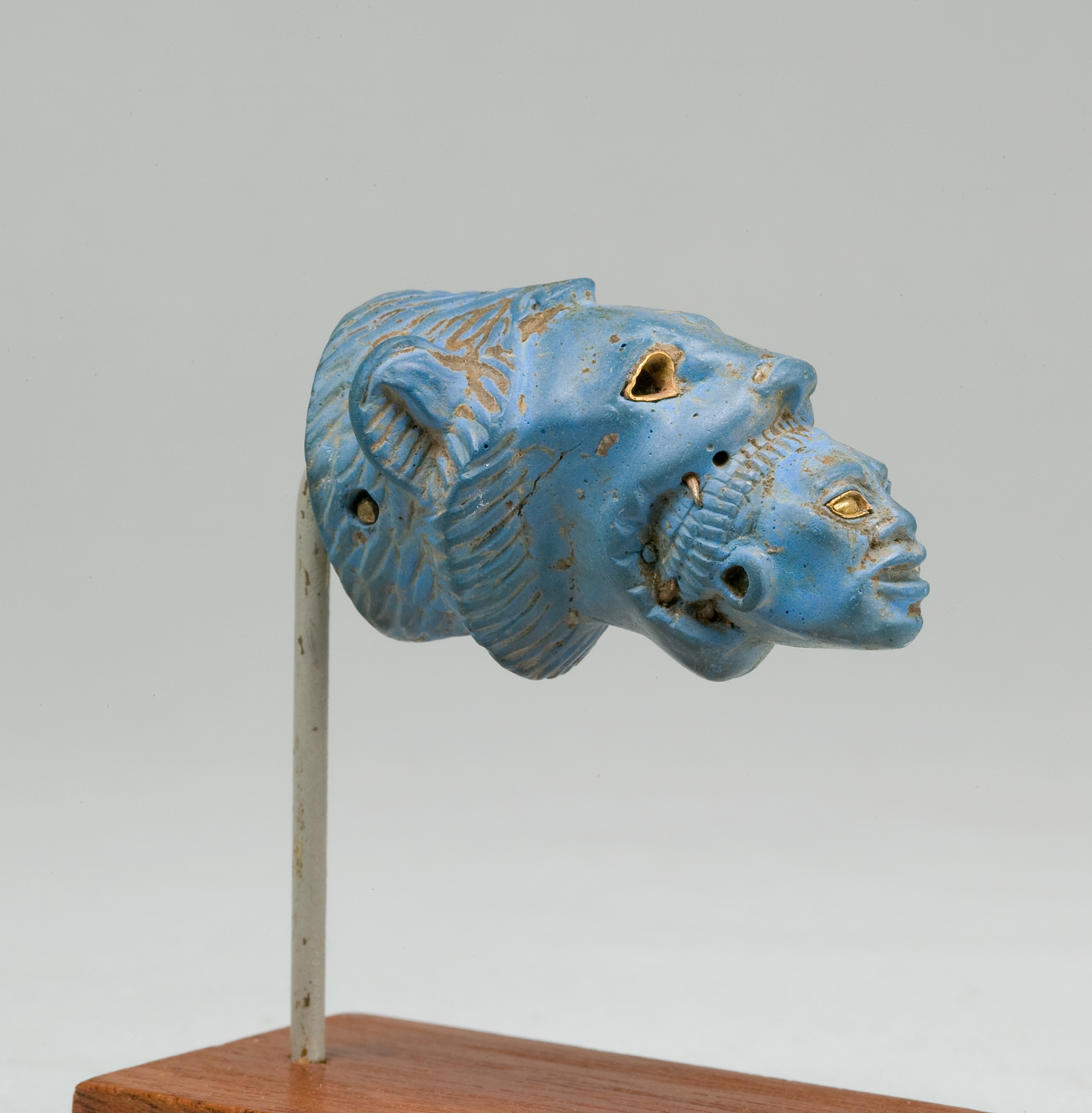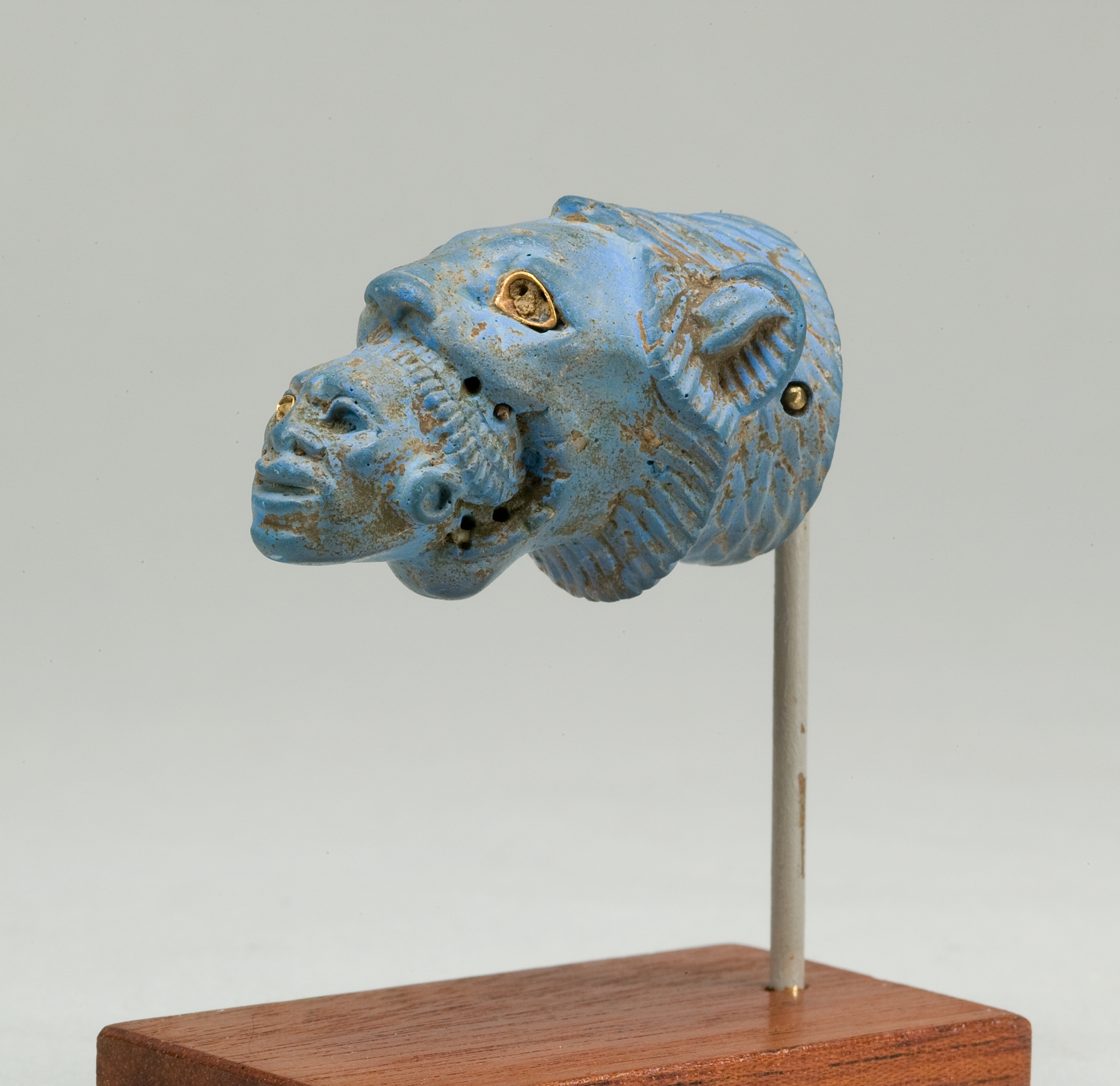Handle Depicting a Lion Subduing a Nubian
New Kingdom, Ramesside
The image of a lion, which symbolizes the pharaoh, subjugating a Nubian, one of the traditional enemies of Egypt, is frequent in early Ramesside art, especially during the reign of Ramesses II. The usual rendition shows a bound Nubian kneeling before a lion that holds the back of the man's head in its jaws. Undoubtedly this protome shows the pose in an abbreviated form.
Two fly whisks with gilded lion heads were found in the tomb of Tutankhamun, and this protome may also have decorated a royal fly whisk or whip handle. The lion's hollow neck has two small holes allowing the piece to be doweled in place.
The piece has been dated to the reign of Ramesses II because there is no indication of lachrimal, or tear, lines beneath the lion's eyes, a common feature of late Dynasty 18 representations of felines that is often lacking in early Ramesside examples (see 35.1.23).
Due to rights restrictions, this image cannot be enlarged, viewed at full screen, or downloaded.
This artwork is meant to be viewed from right to left. Scroll left to view more.









